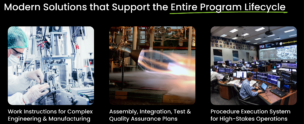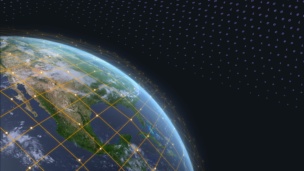We have arrived at a new era of geospatial intelligence – one defined by greater transparency and more data than ever. Let’s talk about how we got here, and the role Planet has to play.
Recently, Planet authored a white paper that explains how and why the commercial space industry has grown so rapidly, and how it’s creating a new era of geospatial intelligence. Today, we’re taking a sneak peek into this work.
The case for increased open-source observation
In late 2021, news outlets around the world reported a massive buildup of Russian military forces near the Ukrainian border in Crimea, western Russia, and Belarus.
Open-source satellite imagery showed a drastic increase in the volume of troops, military infrastructure, and vehicles amassing in this region, underscoring fears by various governments that a military incursion into Ukraine was imminent.
During this time, the importance of commercial satellite companies became clearer than ever before, highlighting the power of transparency and collaboration during what has become the most digitally documented invasion in history. Through the first two weeks of the invasion, the Ukrainian government received data covering more than 15M square miles of the war zone, and national intelligence agencies more than doubled their procurement of commercial electro-optical imagery.
Access to such current data with a high-cadence historical archive allowed for more outreach, evacuation planning, increased situational awareness, journalistic documentation, and critical decision making in impacted areas.
The visibility into this war redefines our understanding of ground truths during active conflict. Commercial satellites not only play a role in delivering insight into happenings on the ground; they will continue to be pivotal once the conflict is resolved and analyzed by national governments, international non-governmental organizations, and defense and intelligence agencies to verify the date, time, and location of war crimes and human rights violations committed.
How Planet Analytics Feeds points to the needle in the haystack
In traditional intelligence scenarios, satellite data was analyzed manually—a task comparable to looking for a needle in a haystack. This approach is error-prone, cumbersome, and takes up way too much of analysts’ valuable time.
Planet has developed a tool using advanced machine learning algorithms and AI that can detect changes in objects of interest, including vessels, aircraft, road, building, and land cover. It not only delivers the haystack of satellite images for analysis; Planet’s Analytics shows you where to find the needle.
Change detection feeds have been used to help verify damage of airplanes on the battlefield, identify construction of covert nuclear weapon facilities, counter misinformation campaigns, call out human rights violations, assist in humanitarian crisis mitigation, track smuggling “dark” ships, and even predict agricultural yield on the frontlines of war.
Understanding the growth in the commercial space industry
“Twenty years ago, space launches were a very government-dominated capability. Now, there’s much more room to innovate,” Josef Koller, systems director for the Center for Space Policy and Strategy at The Aerospace Corporation, said in an interview last year with NBC News.
Since the first successful satellite deployment in 1957, the number of satellites placed into orbit has increased steadily, if not dramatically, each year. Between 2000 and 2022, the number of commercial EO satellites in orbit increased from roughly 10 to over 1,000.
The story of intelligence-gathering satellites began with individual governments locked in highly secretive competition. But today, a new chapter is unfolding: one defined by transparency, collaboration, and the vital importance of commercial private enterprise.
In the 2000s, the opportunities of commercial space became even more clear to a number of visionary aerospace engineers and business leaders. Among them were the founders of Planet.
Planet’s approach to satellite construction has leant them a unique edge in the design, build, and operation of a unique Earth-imaging satellite constellation currently the largest in orbit with roughly 200 birds in operation. A research and development methodology that Planet’s founders helped develop, known as Agile Aerospace, is what made that impressive feat possible.




